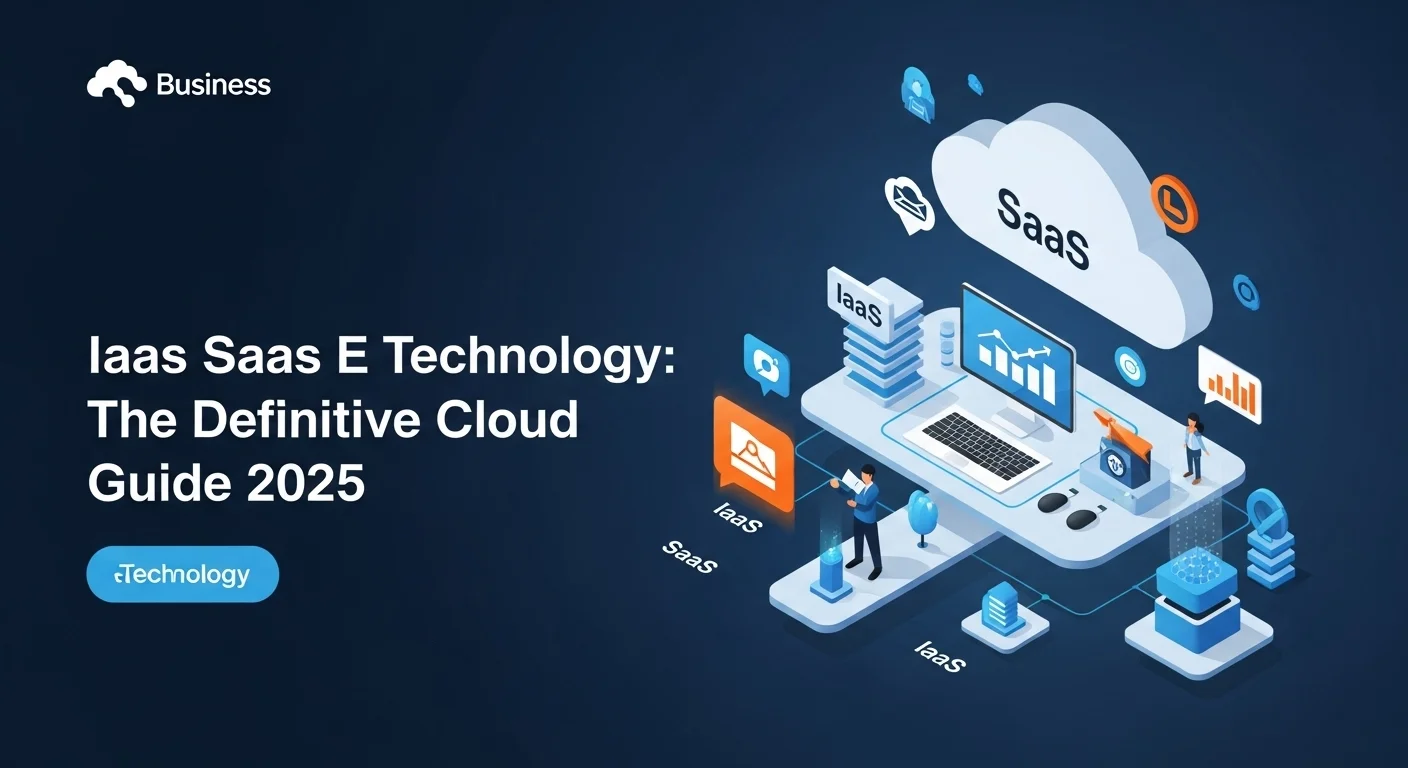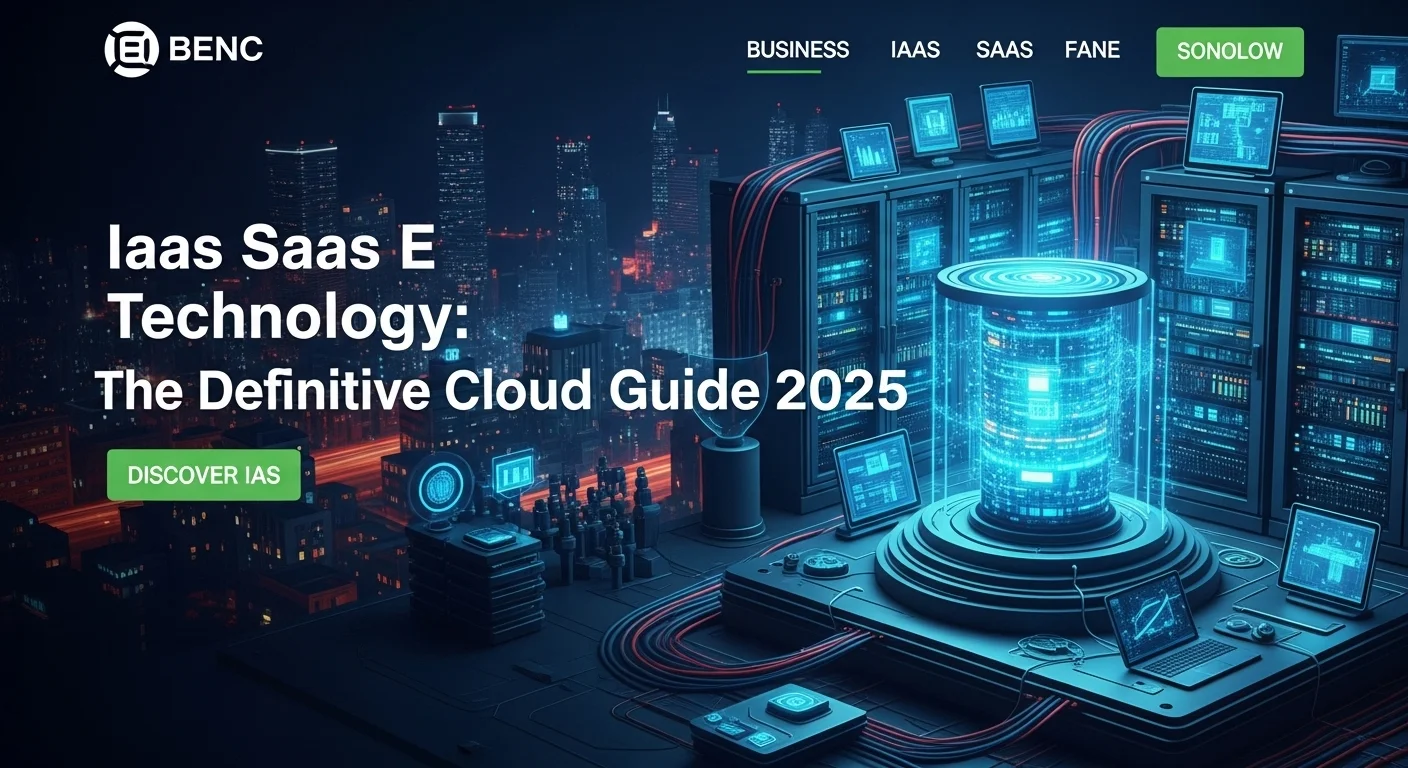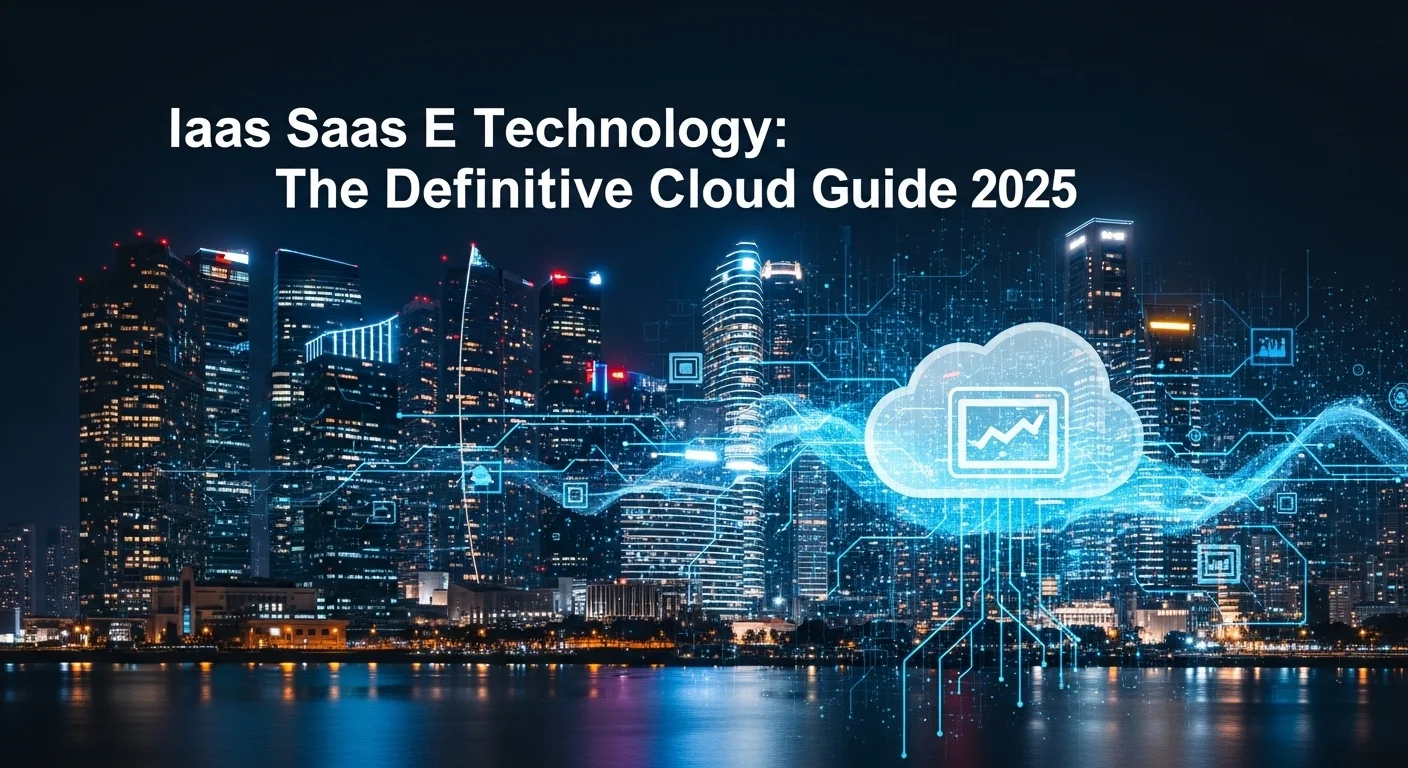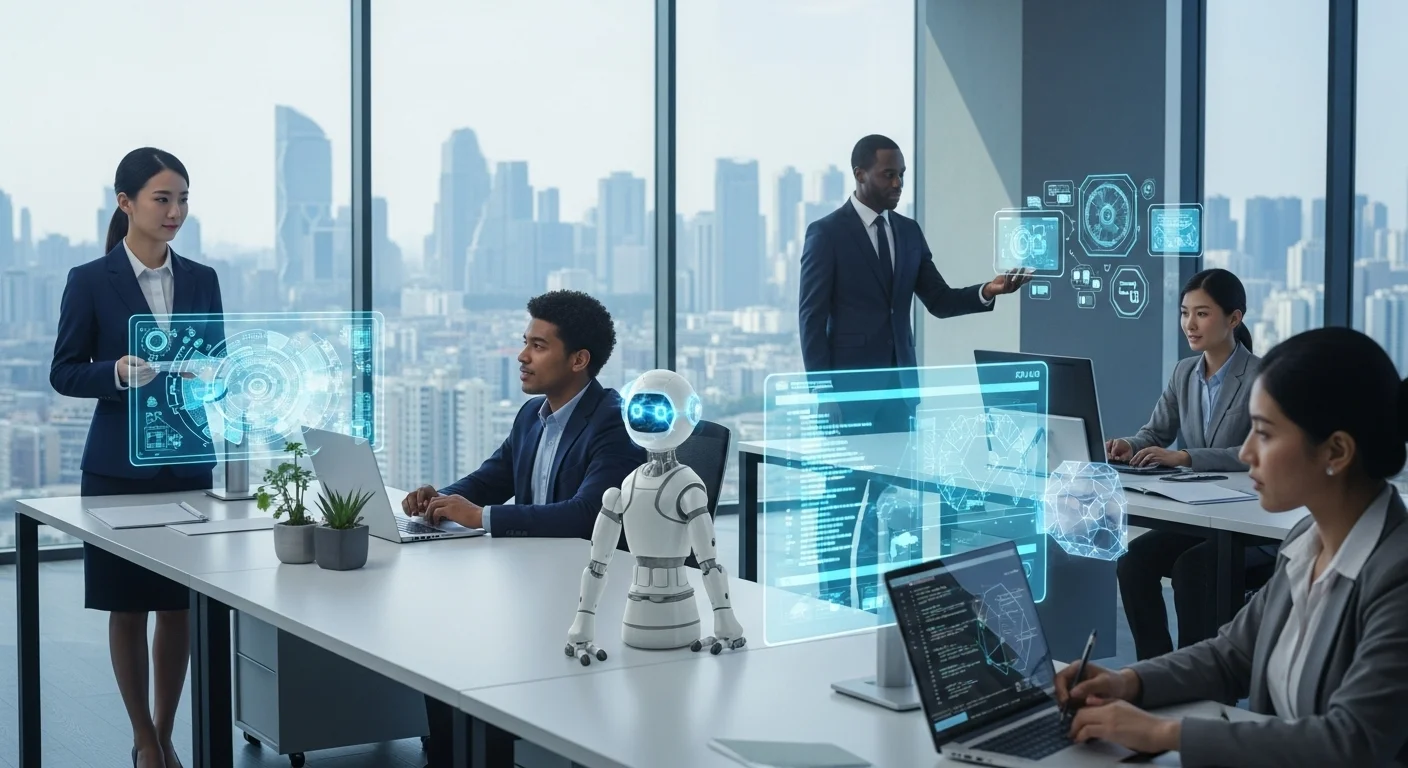IaaS, PaaS, SaaS & Beyond: A Simple Guide to the Cloud Technology Ecosystem

Executive Summary
I remember a client, a growing e-commerce store, completely paralyzed by cloud options. IaaS, PaaS, SaaS... it was just a sea of acronyms. This guide is born from countless conversations like that. For years, I've helped businesses navigate this landscape, and I've found the best way to understand it is to think of it as a complete technology 'Ecosystem.' We'll break down the core cloud services—Infrastructure as a Service (IaaS), Platform as a Service (PaaS), and Software as a Service (SaaS)—using simple analogies. By the end, you'll have a clear map to choose the services that will truly fuel your business, not just complicate it.
Table of Contents
Table of Contents
What is the Cloud Technology Ecosystem and Why Does It Matter?
In my line of work, I see a lot of people get bogged down by tech terms. 'Cloud computing' is everywhere, but what does it really mean for your business? The key is to stop thinking about it as one single thing and start seeing it as an interconnected system. That's why I like to talk about the 'Cloud Technology Ecosystem.' It’s a simple way to frame the main service models: IaaS, PaaS, and SaaS. The 'E' stands for Ecosystem, and it’s the secret sauce. It reminds us that these aren't isolated choices, but building blocks for a larger strategy. Getting this right from the start affects everything—your budget, your ability to grow, your security, and your power to innovate. For any business wanting to stay competitive today, understanding how these pieces fit together isn't just nice to have; it's essential.
Deconstructing the Cloud: IaaS (Infrastructure as a Service)
Let's start at the ground level with Infrastructure as a Service (IaaS). I often explain this to clients as being like leasing a plot of land with all the utilities—water, electricity, plumbing—already connected. You get the fundamental resources (servers, storage, networking) on demand, over the internet. You don't have to worry about buying and maintaining the physical land or power plant; the provider handles all that. However, you're in charge of building the house: you choose the design, lay the foundation, and manage everything inside. In technical terms, you manage the operating systems, data, and applications. This model offers incredible flexibility and control, which is why it's a go-to for IT teams that need to build custom solutions, host complex websites, or crunch massive amounts of data. Big names like Amazon Web Services (AWS), Microsoft Azure, and Google Cloud are the major landowners here. The real beauty of IaaS is you pay for what you use, so you can scale up for a big launch and scale back down afterward without owning tons of expensive hardware.
Building Blocks for Innovation: PaaS (Platform as a Service)
Moving up a level, we have Platform as a Service (PaaS). If IaaS is leasing the land, PaaS is like renting a fully-equipped workshop. You get the land and the building, plus all the tools you need to create something amazing—workbenches, power tools, and assembly lines. The workshop owner (the provider) takes care of maintaining the building and the tools. All you have to do is show up and start building. For developers, this is a dream. PaaS provides the platform—operating systems, development frameworks, and databases—so they can focus purely on writing code and building applications. I've seen startups go from idea to launch in record time using PaaS because it removes so much of the underlying complexity. It streamlines the whole process from coding and testing to deployment. Services like Heroku or Google App Engine are popular examples. PaaS is the crucial link between the raw infrastructure of IaaS and the ready-to-use software of SaaS.
Software on Demand: SaaS (Software as a Service)
Finally, we arrive at Software as a Service (SaaS), the model most people are familiar with, even if they don't know the name. Continuing our analogy, SaaS is like renting a fully furnished apartment. You just sign the lease, get the key, and move in. Everything is ready for you—the furniture, the appliances, the Wi-Fi. You don't have to worry about construction, plumbing, or maintenance; the landlord handles it all. You simply use the service. Think of Google Workspace, Salesforce, or Dropbox. You access these powerful applications through your web browser on a subscription basis. For businesses, the advantage is clear: immediate access to essential tools for things like accounting, project management, or customer relations with almost zero IT overhead. It’s convenient, affordable, and accessible from anywhere. SaaS is a cornerstone of modern business, providing the tools we use every day.
The 'E' in the Ecosystem: Enterprise, and Everything (XaaS)
So what about that 'E'? It's what brings everything together into a powerful, cohesive strategy:
- Ecosystem: No cloud service works in isolation. The smartest companies I've worked with create a seamless ecosystem. They might use IaaS for its raw power and control over data, PaaS to build a unique customer-facing app, and a suite of SaaS tools to run their daily operations. The magic happens when these services talk to each other.
- Enterprise: For larger companies, it's not about IaaS vs. PaaS vs. SaaS; it's about using all three. An enterprise-wide strategy allows different teams to use the model that fits their needs best, all under a single, secure, and well-managed framework.
- Everything as a Service (XaaS): The 'E' also points to the future. The 'as-a-Service' model is expanding to cover almost anything you can imagine: Desktop as a Service (DaaS), Security as a Service (SECaaS), and even AI as a Service (AIaaS). This trend, called XaaS, means that nearly any IT function can be delivered over the cloud. Embracing this mindset is the key to building a flexible, future-proof business.
In the end, thinking in terms of a complete Cloud Technology Ecosystem allows you to strategically combine these models. This tailored approach is what gives market leaders their competitive edge.

Putting It All Together: Choosing Your Perfect Cloud Mix
Knowing the definitions is one thing, but the real skill is in architecting a solution that fits your business like a glove. After years of consulting, I've seen that the most successful companies don't just pick one service; they blend them. Unlocking the true power of the cloud means strategically integrating IaaS, PaaS, and SaaS to optimize everything from cost to performance. This section is all about the practical side—how to compare the models, manage a modern hybrid environment, and apply these concepts to solve real problems.
IaaS vs. PaaS vs. SaaS: A Practical Comparison
When a new client asks me, 'Which one is best?', I always turn it back to them with a few key questions. Your answers will point you to the right mix.
- How much control do you really need? This is the biggest factor. IaaS gives you the keys to the kingdom; you control almost everything. It's for the control freaks (in a good way!). PaaS hands over the keys to the building but lets you decorate and furnish it. SaaS is like a hotel room; you control your activities within the room, but the hotel manages everything else.
- Who is going to use it? IaaS is for your system architects and IT pros. PaaS is a developer's playground. SaaS is for everyone else—your sales team, marketing department, and accountants who just need tools that work.
- How do you want to manage costs? With IaaS, you pay as you go, which is flexible but requires monitoring to avoid surprise bills. PaaS often bundles costs into a platform fee, making development budgets more predictable. SaaS is the simplest: a flat subscription fee per user, per month.
- What does growth look like for you? All three models scale, but differently. With IaaS, you manually add more servers. A PaaS application can often scale automatically based on traffic. With SaaS, you just add more user licenses.
A smart strategy almost always involves a mix. I've worked with startups that use IaaS for their secure database, PaaS to rapidly develop their app, and a dozen SaaS tools to run the business. That blend is the heart of a modern cloud ecosystem.
Hybrid and Multi-Cloud: The New Normal
Let's be honest: very few businesses live in a single, neat cloud environment anymore. The reality is a mix of hybrid and multi-cloud setups. A hybrid cloud connects your own on-premise servers with a public cloud service, giving you the best of both worlds. A multi-cloud strategy means using services from different providers, like AWS and Google Cloud, to leverage their unique strengths. I often advise this to avoid putting all your eggs in one basket. For example, a financial firm might keep its most sensitive data in-house (private cloud) while using the massive computing power of a public cloud for risk analysis. Or a gaming company might use Google Cloud for its data analytics and AWS for its global server network. Managing this beautiful complexity is the core of a modern strategy, ensuring your SaaS tools can securely access data stored on an IaaS platform, no matter where it lives.
Real-World Business Applications
This all comes to life when you see how different industries use their custom cloud mix:
- Retail & E-commerce: I've helped retailers use IaaS to handle the insane traffic spikes of Black Friday without crashing. They use PaaS to quickly build and test new features for their mobile apps and rely on SaaS for everything from inventory to customer chat.
- Finance & Banking: This sector is all about security and innovation. A bank will use a hybrid model, keeping transaction data on-premise while using a secure PaaS environment in the public cloud to develop the next generation of fintech apps.
- Healthcare: For healthcare, it's about managing sensitive patient records and powering telemedicine. They need highly secure IaaS and PaaS environments that are HIPAA compliant, while using SaaS for patient scheduling and billing.
- Manufacturing: Factories are now data goldmines. They use IaaS to store and process huge amounts of data from IoT sensors on the factory floor and PaaS to build apps that predict when a machine will need maintenance before it breaks.
Security in the Cloud: Who's Responsible for What?
A critical conversation I have with every client is about security. In the cloud, you and the provider share the responsibility. It's like a rental agreement. Here's the simple breakdown:
- In IaaS, the provider secures the physical building (the data center). You are responsible for everything inside: locking the doors and windows (securing your OS and network) and protecting your valuables (your data).
- In PaaS, the provider's responsibility extends to securing the building's infrastructure and the workshop tools. You're responsible for the things you build with those tools and for making sure only the right people have a key to the workshop.
- In SaaS, the provider handles most of the security for the entire furnished apartment. Your main job is to be a responsible tenant: manage who you give keys to (user access) and protect your own belongings (your data).
No matter the model, a strong security plan includes things like multi-factor authentication, data encryption, and regular check-ups. It's about building a secure foundation across your entire cloud portfolio.

Pro Tips for a Smarter Cloud Strategy
Once you've got your cloud services up and running, the journey isn't over. In fact, it's just beginning. From my experience, the most successful companies are the ones that continuously optimize their cloud environment. It's about refining your approach to get the most value, tightening security, and staying ready for what's next. A great cloud strategy isn't static; it's a living thing that grows with your business. Here are some of the most important tips and strategies I share with my clients.
Cloud Migration Strategies: A Practical Checklist
Moving your existing operations to the cloud can feel overwhelming. A framework known as the '6 Rs' can help simplify your decisions. Think of it as a checklist for each piece of your tech stack.
- Rehost (Lift and Shift): This is the simplest path. You're essentially picking up your applications and moving them to the cloud with minimal changes, like moving your furniture to a new house. It's fast and a great first step.
- Replatform (Lift and Reshape): Here, you make a few small tweaks during the move to take advantage of the cloud. It's like moving and deciding to upgrade to a more efficient appliance—you're not redesigning the whole kitchen, just making a smart improvement.
- Repurchase (Drop and Shop): This means switching to a totally new product, usually a SaaS solution. Instead of moving your old, clunky accounting software, you decide to subscribe to a modern cloud-based one.
- Refactor/Rearchitect: This is the most involved approach. It means rebuilding your application to be 'cloud-native,' taking full advantage of the cloud's power. It's a big project, but it can pay off huge in performance and scalability.
- Retire: During the planning, you'll inevitably find software you don't even use anymore. Turning it off saves money and reduces complexity. It's surprising how often this happens!
- Retain: Some things just aren't ready to move, maybe for regulatory reasons or because they're working just fine where they are. It's okay to leave some things behind and revisit them later as part of a hybrid strategy.
Your migration plan will likely be a mix of all these, and choosing the right one for each application is the key to a smooth transition.
Best Practices for Governance and Cost Control
A successful cloud journey requires good habits. Strong governance is what keeps your environment secure, compliant, and cost-effective.
- Choose Your Partners Wisely: Don't just look at the price. Evaluate providers on their reliability, security, and support. And always read the fine print on the Service Level Agreements (SLAs)—that's their promise to you about performance.
- Master Your Cloud Spending (FinOps): The one thing I always tell my clients about cloud costs is that they can get out of hand fast without oversight. Embrace FinOps, which is just a fancy term for being financially accountable for your cloud use. Use cost management tools, set budgets, and hunt for savings like shutting down idle resources.
- Govern Your Data: Know where your data lives, who has access to it, and how it's protected. If you're in an industry with regulations like GDPR or HIPAA, this is non-negotiable. Use compliance tools and run regular audits to stay on the right side of the rules.
- Train Your Team: Your people are your most important asset and your first line of defense. Make sure they understand cloud security basics and your company's policies. An informed team is a secure team.
The Future is Now: AI, Machine Learning, and XaaS
The cloud is the engine for today's most exciting innovations, especially Artificial Intelligence (AI) and Machine Learning (ML). It provides the raw power needed to train and run smart applications. You don't have to be a tech giant to use it, either. The major cloud providers offer AI/ML services that are surprisingly accessible. You can integrate pre-trained tools to do things like analyze customer sentiment or use a platform to build your own predictive models. This is where the Everything as a Service (XaaS) trend is really taking off. We're seeing more specialized, powerful services emerge, like Serverless computing, which lets developers run code without thinking about servers at all. A forward-thinking cloud strategy means building a platform that's not just solving today's problems, but is ready for the innovations of tomorrow. The ecosystem is always growing, and your ability to adapt and integrate these new services will define your success.
Expert Reviews & Testimonials
Sarah Johnson, Business Owner ⭐⭐⭐
Good information on the cloud models, but as a business owner, I would have loved to see a few more real-world case studies.
Mike Chen, IT Consultant ⭐⭐⭐⭐
This was a really helpful article. It clarified a lot for me, though a couple of the more technical points could have been a bit simpler.
Emma Davis, Tech Expert ⭐⭐⭐⭐⭐
An excellent and comprehensive guide! This was incredibly helpful for my specialization. Everything was explained perfectly.



